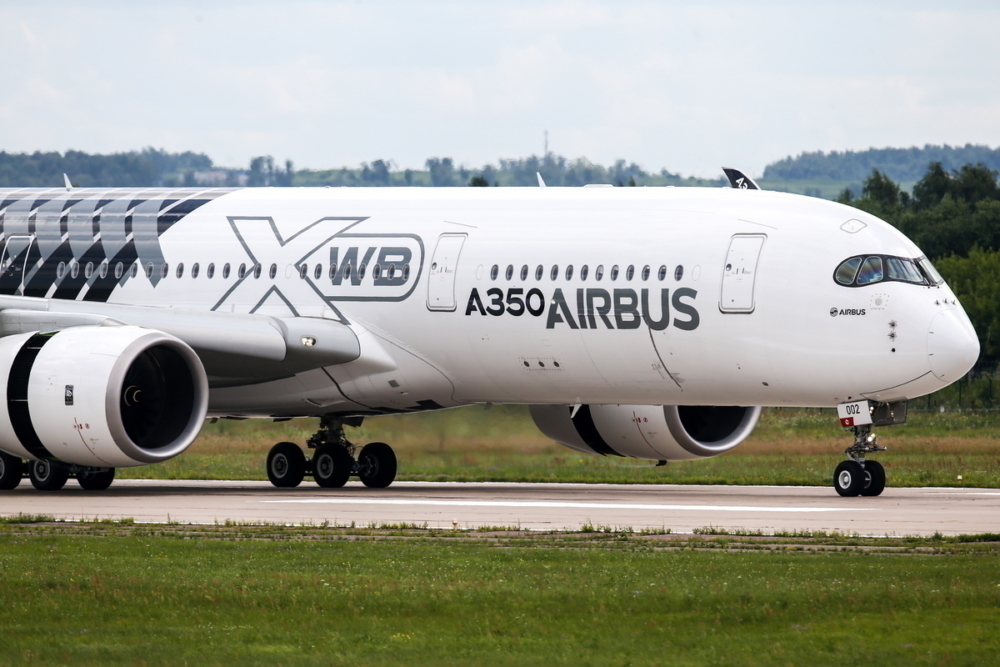From wood to metal, fuselages have gone through several developments over the last century. There is now a focus on the use of composites in this field, with some of the most popular plane manufacturers turning to these materials. As a result, the commercial aircraft industry has been going through a revolution.

Plenty of advantages
Composite materials are made from two or more different materials that, when combined, are stronger than the elements by themselves. Notably, manufacturers have been paying extra attention to composites to build aircraft that are more comfortable, fuel-efficient, durable, and lighter.
Notably, approximately half of each Airbus A350 and Boeing 787 is made of composites. With two jet powerhouses adopting these materials, there are undoubtedly benefits to be had.
Composite materials are not as heavy as traditional structures such as aluminum. Moreover, they do not fatigue or corrode due to external factors.
By weight, the the Boeing 787 is 50% composites (but 80% volume), 20% aluminum, 15% titanium, 10% steel and 5% other elements. Composites take up the bulk of the structure. However, with this move, the overall weight is reduced by an average of 20%.
There are not only weight savings to be had. Another benefit is that composite structures can mold into any shape. Therefore, Boeing made the fuselage of the 787 as multiple barrel pieces, instead of several smaller aluminum panels that need to be eventually connected.

Crucial materials
Across the pond, Airbus is also a fan of composite materials. It particularly highlights the deployment of carbon-fibers reinforced plastic (CFRP). Here, carbon fibers lock into place with a plastic resin. This provides a better strength-to-weight ratio than metals and offers less risk of fatigue.
It’s not only the fuselage that takes advantage of this science. These materials can be found across the frame. Most of the A350 XWB’s wing is comprised of lightweight carbon composites, such as its upper and lower covers.
“In CFRP production, thousands of microscopically thin carbon threads are bundled together to make each fibre, which joins others in a matrix held together by a robust resin to achieve the required level of rigidity. The composite component is produced in precisely shaped sheets laid atop each other and then bonded, typically using heat and pressure in an oven called an autoclave, resulting in a high quality composite,” Airbus states on its website.
“Parts such as fuselage and wings can make extensive use of composites as the required fibre loading – the way the way the fibres are laid up and cured in the autoclave – is simple. However, parts requiring complex loading will, for the foreseeable future, continue to use metal.”

Long-term benefits
CFRP components are initially more expensive to produce than standard metallic parts. However, they can significantly save airlines expenditure on future maintenance. For instance, Airbus shares that an A350 requires 50% fewer structure maintenance tasks. Additionally, the threshold for airframe checks for the plane is at 12 years while the timeframe for the A380 is just eight.
Ultimately, along with the tougher and stronger fuselage, the reduction in weight helps airlines to carry more people on board while burning less fuel and flying father. In an age when every penny counts for carriers, there are considerable advantages with composite materials.
There is still room for growth with the technology involved and manufacturers are continuing to progress in this field. So, by the time the decade is over, these materials will feature even more prominently across the industry.
What are your thoughts about the use of composite materials on aircraft? How do you see the technology developing this decade? Let us know what you think of the prospects in the comment section.
[ad_2]
Source link


